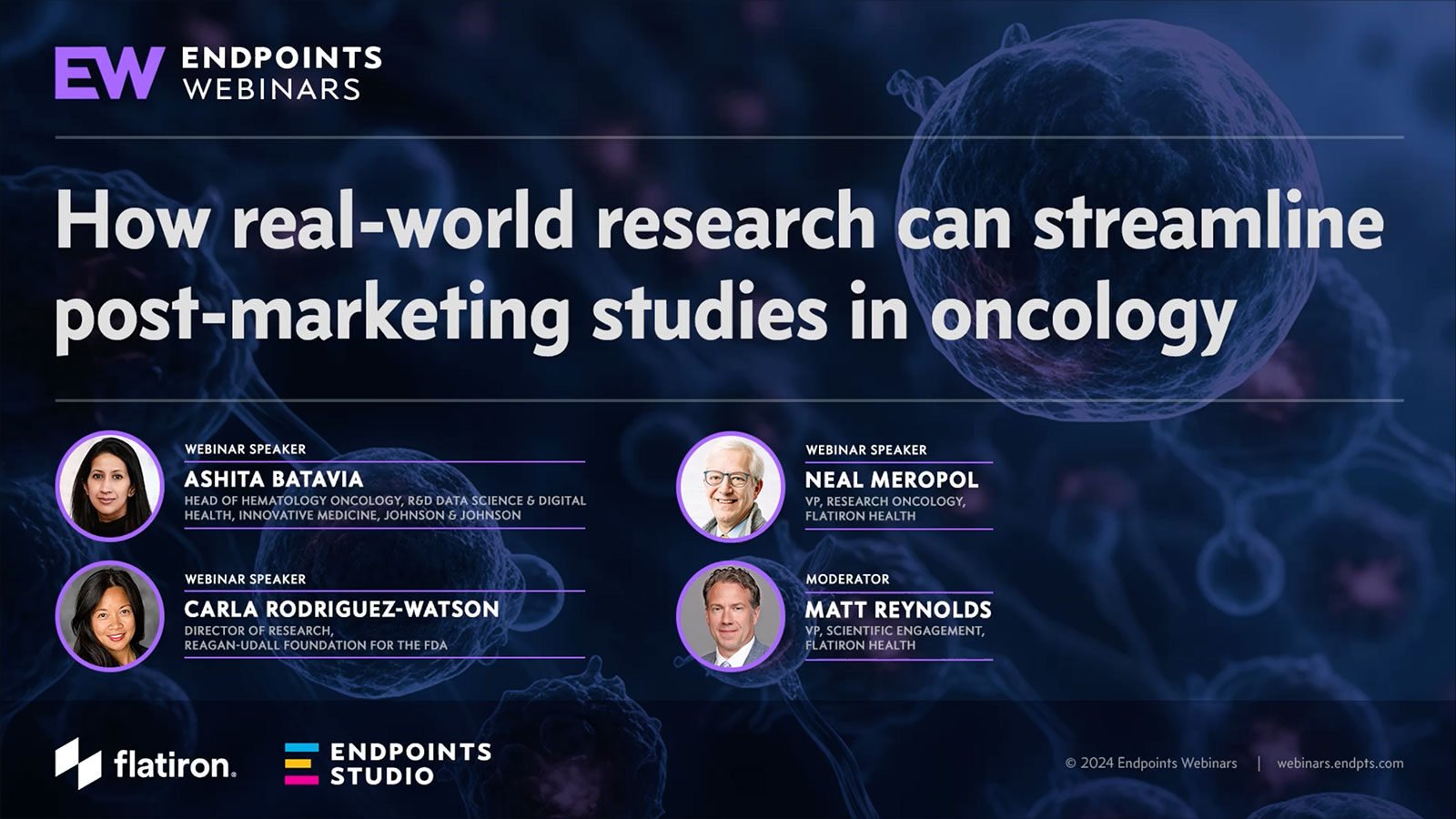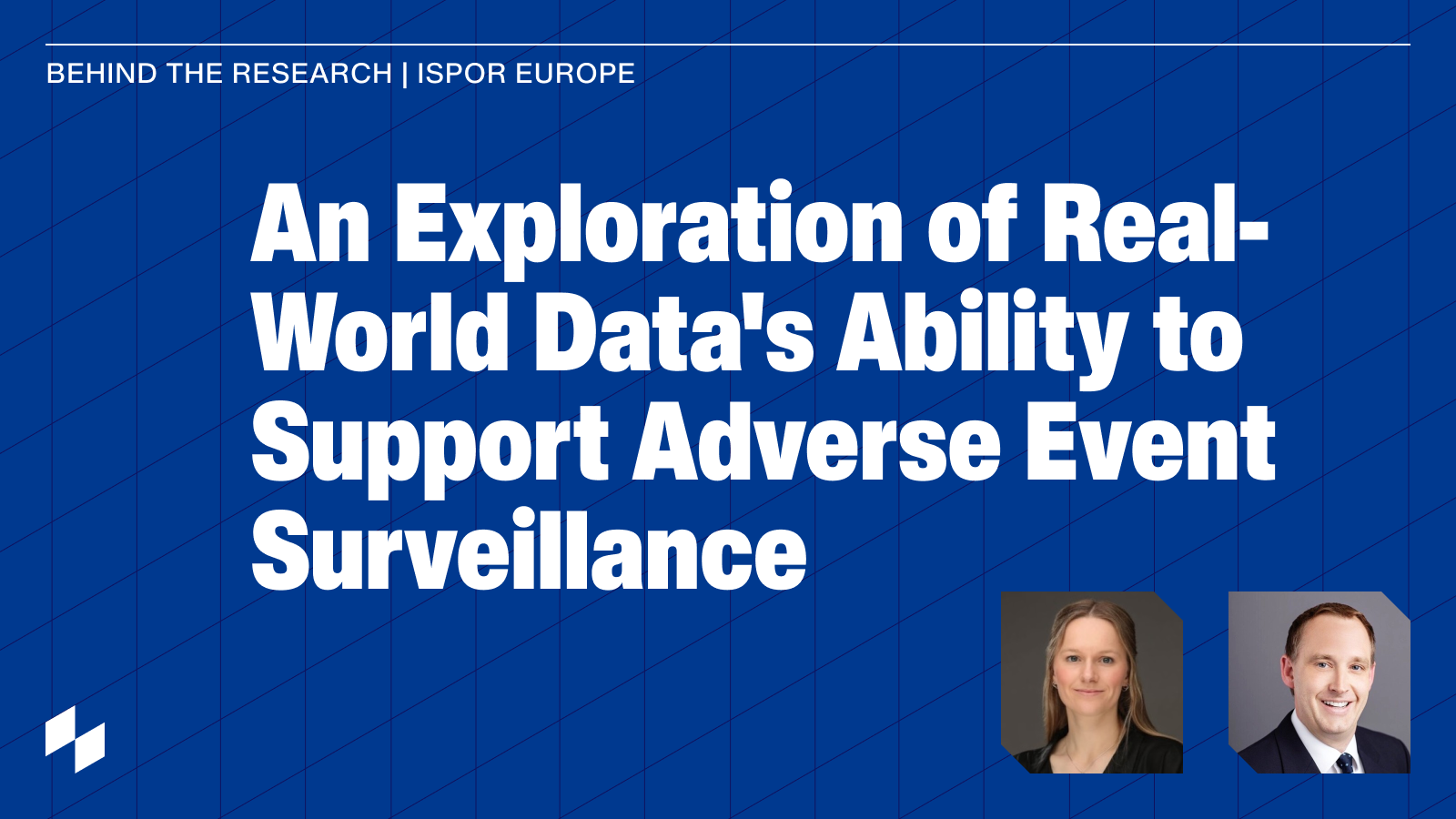We tend to think of clinical trials as preambles to the drug approval process. A life science company develops a new drug, runs clinical trials to study its effects, and if everything goes well, submits it for approval.
But just as important is understanding the risk-benefit of medicines already on the market, and drug manufacturers are routinely asked to conduct clinical studies for drugs and biologics that have already been approved.1 All drugs approved under an accelerated approval program, for instance, are required to confirm clinical benefits via a confirmatory trial. Traditional approvals may involve follow-up studies as well to answer questions related to safety and efficacy, patient diversity, optimal dosage, or potential drug interactions.
How much of a burden are those post-approval studies, and what can real-world evidence (RWE) do to alleviate that burden?
The burden of postmarketing studies
Post-approval studies can include two forms: postmarketing requirements (PMR) that are mandated by statute or regulation, and postmarketing commitments (PMC) that a drug manufacturer has committed to conducting. Neither form should be taken lightly: in oncology alone, 17 drugs that were granted accelerated approval by the U.S. Food and Drug Administration (FDA) have been withdrawn in the past three years because they failed to meet their postmarketing objectives.2
We reviewed cancer drug approvals from 2020 - 2022 by the FDA and found that the Agency issued 1.8 PMR/PMCs per approval. Drugs approved through the FDA’s accelerated program bore the brunt of the burden with close to 4 PMR/PMCs per approval, compared to 1 for every regular approval.
Each of those PMR or PMC studies can take years to complete and cost millions of dollars. A Deloitte analysis estimates that by 2027, biopharma manufacturers will spend nearly $1 billion annually to satisfy PMR/PMCs in oncology, a big hurdle in an industry already suffering from declining margins.3 It’s hardly a surprise that less than 20% of PMRs are adequately fulfilled three years after approval, and less than half six years on.4
PMR/PMC studies fall into 7 broad categories
Before we can estimate the benefit of using RWE to relieve some of that operational and financial burden, it’s important to understand the different categories of PMR/PMC studies in the field.
The industry doesn’t have a standard classification for PMR/PMCs, so we reviewed every oncology-related new drug application (NDA), biologics license application (BLA), as well as supplemental applications (sNDA and sBLA) approved by the FDA between 2020 and 2022, and classified their associated PMR/PMCs according to their primary clinical purpose. We cataloged a total of 272 PMR/PMCs and figure 1 shows their distribution across seven main categories.
Fig. 1: Categories of PMR/PMC studies associated with oncology drugs and biologics
approved by the FDA from Jan 1, 2020 to Dec 31, 20225 
Four design approaches to run modern PMR/PMCs
For each of the 272 PMR/PMC we identified, we then examined the proposed method of data collection and whether the design would need to be interventional or not.
Those are important dimensions to determine whether a study might be a good candidate for RWE. For instance, a study that doesn’t require additional interventions (observational) and can be fulfilled with data already captured during routine patient care (secondary data) could be a very good fit for retrospective RWE. On the other hand, a study that requires additional information not routinely collected in clinical practice could present an opportunity to introduce prospective RWE data generation methods implemented at the point of care (including primary data collection according to a research protocol) as an alternative to a traditional clinical trial.6
When we analyzed the PMR/PMC studies issued by the FDA in 2020-2022, we found that some study categories (like dose optimization or drug interactions) almost always required traditional clinical trials, while others (like studies involving safety and those focused on underrepresented populations) could benefit from more pragmatic designs involving RWE, even when they involve some level of intervention or intentional data capture at the point of care.
Figure 2 shows (in green) what proportion of studies in each of the main PMR/PMC categories could be fulfilled with an approach that relies at least partly on RWE.
Fig. 2: Suitable study designs for PMR/PMCs in each category7

Fertile ground for RWE in postmarketing studies
The main takeaway from our analysis is that 25% of recent PMR/PMC studies could benefit directly from RWE. Those include:
-
84% of postmarketing studies focused on underrepresented populations (e.g., target populations based on race, ethnicity, age, gender, location, socioeconomic status, pregnancy status, co-morbidity or other relevant indicators)
-
34% of postmarketing studies focused on safety (such as studies aimed at characterizing drug-related adverse events, patient safety monitoring, or cumulative and integrated safety analyses).
The FDA has recognized the value of RWE and is “committed to realizing the full potential of fit-for-purpose RWD to generate RWE that will advance the development of therapeutic products and strengthen regulatory oversight of medical products across their lifecycle.”8 The agency recently issued guidance to address diversity in postmarketing studies and offered RWD as a practical data source, under the right conditions.9 Our analysis confirms that diversity PMR/PMCs are fertile ground for RWE.
But the potential exists as well to use RWE, at least in some capacity, to streamline the other 75% of PMR/PMC studies. Even if they rely on more traditional clinical trial designs, they can use RWE to characterize disease burden, optimize inclusion/exclusion criteria, anticipate patient and site participation, or construct a suitable control arm. And some of them can be designed as randomized pragmatic clinical trials (PCT) and integrate prospective real-world data at the point of care.10
RWE in action
At Flatiron, we’ve developed deep expertise over more than a decade with both retrospective and prospective studies, and we work with an extensive network of hundreds of community oncology practices and academic medical centers around the world to help biopharma manufacturers use RWE to select suitable sites, recruit patients and capture reliable data (both observational and intentional).
A good example of the impact that RWE can have on a PMR/PMC is the work we did with Roche a few years ago, helping the company submit new safety data to the European Medicines Agency to support a post-approval risk management plan for Kadcyla in breast cancer patients with low left ventricular ejection fraction (LVEF). That work saved the company five years compared to a traditional registry study and resulted in two label updates.
Real-world data and analytics have come a long way, and the right partner can help you achieve your PMR/PMC objectives cheaper, more seamlessly and considerably faster than ever before.
References
-
Analysis of FDA's Accelerated Approval Program Performance Dec 1992–Dec 2021. Therapeutic Innovation & Regulatory Science (2022)
-
Discrepancy in accelerated approvals for cancer drugs in the United States and Europe. CancerScope (2024)
-
Pharma R&D return on investment falls in post-pandemic market. Deloitte (2022)
-
Source: Flatiron analysis of FDA Oncology (Cancer) / Hematologic Malignancies Approval Notifications
-
Real-World Evidence: Considerations regarding non-interventional studies for drug and biological products. FDA Draft Guidance (Mar 2024)
-
Source: Flatiron analysis of FDA Oncology (Cancer) / Hematologic Malignancies Approval Notifications
-
Project Pragmatica: Advancing evidence generation for approved oncology medical products. FDA (2022)




